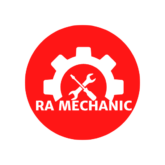 Access ≠ Agency
Access ≠ Agency
We are told we live in a time of unprecedented access. 3D printers in libraries. Open-source design platforms. Modular robotics kits for under $50. “Anyone can build,” we’re told. “The tools are finally in your hands.”
But this narrative, seductive as it is, deserves interrogation. Access is not agency. Tools do not guarantee transformation. The so-called democratization of mechanics — often celebrated in tech journalism and educational marketing — tends to conflate participation with power. It flattens the structural into the individual. It renders the systemic appear solved through interface.
Even platforms like Koi Fortune, though far from the engineering world, reflect a parallel logic: simplified control systems, feedback loops, gamified accessibility. The user is framed as sovereign. But the system is already pre-defined.
Is this openness — or orchestration?
The Industrial Illusion of Choice
Historically, the term “mechanics” referred to physical processes — gears, levers, torque, motion. Today, it includes algorithms, logic chains, modular kits. But what binds all these definitions is control. To engage with mechanics is to intervene in a system. To manipulate causality.
And yet, in the contemporary landscape, that causality is increasingly obscured. Interfaces become smoother. Processes are hidden behind APIs. “User-friendly” replaces “technically legible.” What remains is the illusion of manipulation — touchscreens as control panels, drag-and-drop as engineering.
The democratization of mechanics, in this frame, becomes less about giving people tools — and more about designing experiences that simulate tool-use without disrupting underlying architectures.
Platforms as Constraint, Not Liberation
The proliferation of design tools — CAD software, DIY robotics, even circuit emulators — is often cited as evidence of democratization. But these platforms are rarely neutral. They encode assumptions: about user behavior, about scalability, about monetization.
A free design tool often exports in proprietary formats. A shared online repository enforces usage licenses. A beginner-friendly electronics kit is optimized for tutorial replication, not innovation. What looks like openness is often heavily framed. You can create anything — as long as it fits the format.
The user becomes not a maker, but a replicator. The mechanic becomes a pattern, not a system.
Gamification and the Illusion of Mastery
Part of the appeal of mechanical democratization is emotional. It offers a return to tactile agency — the sense that one can build, repair, understand. But in many cases, what’s offered instead is gamified engagement: LED badges that light up after five steps, kits that reward completion with sounds or animations.
This is not mechanics. It is behavioral feedback.
The system does not teach resistance — how to deal with friction, entropy, unpredictability. It teaches iteration within constraint. The user is not empowered to intervene, but to perform the expected sequence.
And mastery, here, is defined by the platform — not the user.
Who Owns the Machines?
True democratization of mechanics would imply a redistribution of control over infrastructure: manufacturing processes, energy systems, mobility frameworks. It would mean not just the ability to design, but to decide — what gets built, where, for whom.
Instead, most accessible mechanical tools remain disconnected from power. You can design a drone, but you can’t contest the airspace. You can repair a bike, but not redefine urban traffic flow. You can automate your lights, but not decarbonize your grid.
The tools are impressive. But the decisions remain elsewhere.
From Makerspaces to Marketplaces
Even the most radical-seeming institutions — hackerspaces, makerspaces, FabLabs — often get pulled into capitalist circulation. Their prototypes are commodified. Their skills are absorbed by tech firms. Their spaces become branding opportunities.
What began as resistance — the reclaiming of mechanical literacy — becomes a pre-incubator. A branding pipeline. A résumé booster.
The problem is not in the tool itself. It is in the frame that surrounds it. When mechanical literacy becomes a stepping stone to entrepreneurialism rather than a mode of collective infrastructure-building, the democratic gesture is absorbed.
What remains is productivity, not politics.
Conclusion: Beyond Access, Toward Autonomy
To speak of democratization in any domain requires more than accessibility. It requires redistribution — of knowledge, of material, of institutional legitimacy. The democratization of mechanics must mean more than low-cost kits and YouTube tutorials. It must include the right to redesign systems, not just build within them.
That means rethinking not just what tools are available, but who defines the problems they solve. It means asking whether the user is genuinely empowered to question — or merely trained to optimize.
The future of mechanics cannot be judged by the number of people building. It must be judged by what they are allowed to build, and why.
Because a toolkit without autonomy is not empowerment. It is scaffolding for obedience.




